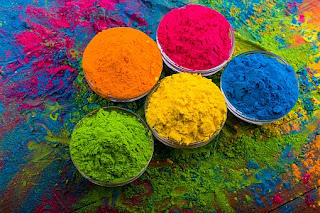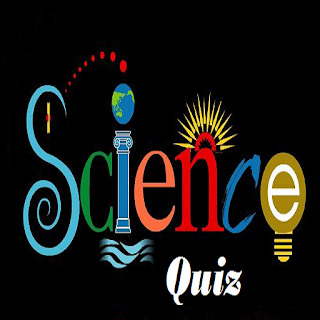UNHOLY COLOURS OF HOLI
Holi, the festival of colours, is warmly celebrated in our culture that transcends all the barriers of space and time. Chemistry of Holi colours shows that these are usually synthetic industrial dyes mixed with various bases of inorganic origin which have detrimental effects on our body and the environment.
There are mainly four types of colours available in the market for Holi such as Gulal , Dry Powder, Pastes, and Water colours.
The Gulal has two components : a Colourant that is usually an oxidised heavy metal such as Cadmium, Chromium, Iron, Lead, Mercury, Nickel and Zinc or toxic coal tar based dyes or ‘azo’ group dyes such as Auramine (for producing yellow colour), Malachite (for producing green colour), Rhodamine (for producing orange colour) and Methylene (for producing blue colour). The other part of the Gulal is a Base which could either be Asbestos or Silica in which the colourants are blended. Besides, the Gulal also contains sand, starch, salt, mica or powdered glass for providing additional lustre.
The Dry Powder, on the other hand, contains various inorganic compounds such as Copper Sulphate (for producing Blue colour), Lead Oxide (for producing Black colour), Mercury Sulphide (for producing Red colour), Chromium Iodide (for producing Purple colour, Aluminium Bromide (for producing Silver colour) etc.
Sometimes, the inorganic dry colours are mixed in a Base of engine oil or other inferior quality oils to make a Paste which is easy to be applied on the body. Adding oils to these colours increases their toxicity level and the degree of permeability of the colours to human skin aggravating the symptoms.
Similarly, the Water colours commonly used during Holi include solutions of Gentian violet, Methylene blue, Mercurochrome and Potassium Permanganate.
All these substances used in various forms of colours are highly toxic to the body on a short and long term basis. Lead, the most hazardous heavy metal, affects mainly the nervous system, kidneys and reproductive system of the body. Exposure to Lead gives rise to complications such as anaemia, headache, abdominal pain, joint discomfort and old-age osteoporosis. Moreover, Lead poisoning retards the physical and mental growth of children and results in miscarriage, abortion, premature birth, low birth weight or nervous damage of the foetus for women.
Mercury, another toxic metal used mainly for imparting red colour may produce health disorders like cough, breathlessness or even pneumonia. Mercury poisoning results in many health related problems including headache, increased heart beat rate, tremors, fall in blood pressure level and forgetfulness. Pregnant mothers exposed to Mercury may give birth to under-weight babies with mental retardations.
Blue colours contain Copper Sulphate which can cause itching, redness or swelling of the eyes and even lead to temporary or permanent blindness. Similarly, purple colour contains Chromium Iodide, which can cause severe allergy or may induce bronchial asthma in a hypersensitive person. Aluminium Bromide present in silver colours has proven to be carcinogenic.
Some other dyes used in Holi such as Auramine, Malachite, Rhodamine, and Methylene have several toxic effects on our body. Auramine causes irritation to the mouth, throat , stomach, liver, eyes and skin. Malachite causes damage to bones, eyes and lungs. It may be responsible for malignant tumours in testis, ovary, urinary bladder, kidney, liver, spleen and breast. Rhodamine causes cancer and genetic disorders as well as degenerative changes in liver, spleen, kidney and urinary bladder.
Moreover, Asbestos, Silica and Powdered Glass, widely used as Base in dry colours are extremely harmful to the body. Asbestos is a well-known cancer causing substance while Silica and powdered Glass may damage soft tissues of the eyes and skin. Coloured pastes comprising inferior quality oils cause skin allergy, itching or even temporary blindness. Many Water colours contain alkali as the base. When such colours enter into the eyes, they can create serious problems of vision including burning and irritation. Gentian violet, the most widely used colour concentrate used during Holi, can cause skin discolouration, dermatitis, skin allergy or irritation of the mucous membrane.
Even the way people play Holi is also risky. Some people make thick paste of a dry colour with little water on their hands and rub it on the faces of others. If fine particles like powdered glass in the dry colour get into the eyes of the victim, it can cause irritation, swelling or pain in the eyes. Rubbing of cheap and inferior quality Gulal on the face may lead to scratches and rashes on the delicate skin.
Apart from these serious health problems, use of inorganic toxic colours also has serious impacts on the environment. All these colouring ingredients of Holi are non-biodegradable. When washed away, residues enter water sources affecting the food chain and food web of the entire eco- system.
Hence, given the potential health risks posed due to the aforesaid synthetic dyes, the only way to play safe Holi is to go for natural and eco-friendly colours.
Nikunja Bihari Sahu
Education Officer
Regional Science Centre
Bhopal
Phone: 8018708858
To read the same article published in The Central Chronicle dated 25.03.24, please click the following link ;
https://drive.google.com/file/d/1Pasa1j4Qnw8arMD_4ltezGZ7rc654s3S/view?usp=sharing




Comments
Post a Comment